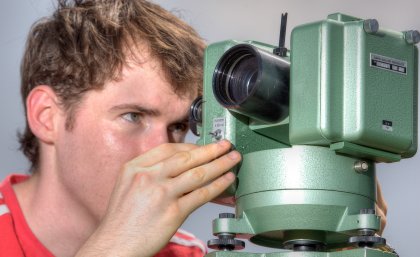
Joshua Soderholm loves a good thunder storm.
It means he can head into the field and collect data for a University of Queensland research project that could lead to more accurate warnings of South East Queensland’s unpredictable and destructive spring and summer storms.
The Geographical Sciences PhD student is exploring the collisions between thunderstorms and sea breezes which lead to rapid, unpredictable and dangerous storms over the heavily populated region.
“The aim of this project is to provide the South East Queensland public with more accurate warnings about thunderstorms,” Mr Soderholm said.
“From November onwards I will be in the field with a research team and a range of instruments to collect data during thunderstorms.
“We will deploy weather stations, weather balloons and a laser analysis tool directly into the path of thunderstorms, then ride out the storm in the research vehicle.
“This equipment will be used to identify thunderstorms which collide with the sea breeze and to monitor how they change throughout the interaction.
Sea breezes are a daily part of life in coastal regions such as South East Queensland and bring much-needed relief on hot spring and summer days.
But when these breezes collide with thunderstorms they provide extra moisture and winds which can turn an ordinary storm into an unpredictable and dangerous tempest.
The data the research team collects will be used to develop tools to aid the forecasting of thunderstorm collisions with sea breezes so that earlier and more accurate warnings can be delivered.
The drivers of rapid change in thunderstorms after a sea breeze collision are poorly understood, so accurate forecasting is difficult.
Collisions between thunderstorms and sea breezes have resulted in some of the most dangerous and damaging storms, including the 1973 Brisbane tornado, a 1985 Brisbane hail storm, a 1989 Redcliffe supercell, and The Gap supercell in November 2008.
“When these collisions occur under the right conditions, the potential for severe weather increases dramatically,” Mr Soderholm said.
“This includes larger hail, stronger wind gusts, flash flooding, tornadoes and more frequent lightning in coastal regions.
“More accurate forecasting will help people in these regions to prepare for and avoid these dangerous storms.”
Media: Mr Soderholm will be in the field from Monday 25 November (weather dependant). Media outlets interested in accompanying the research team to film or photograph their work can contact him on 0403 800 655 or j.soderholm@uq.edu.au.
.jpg)











